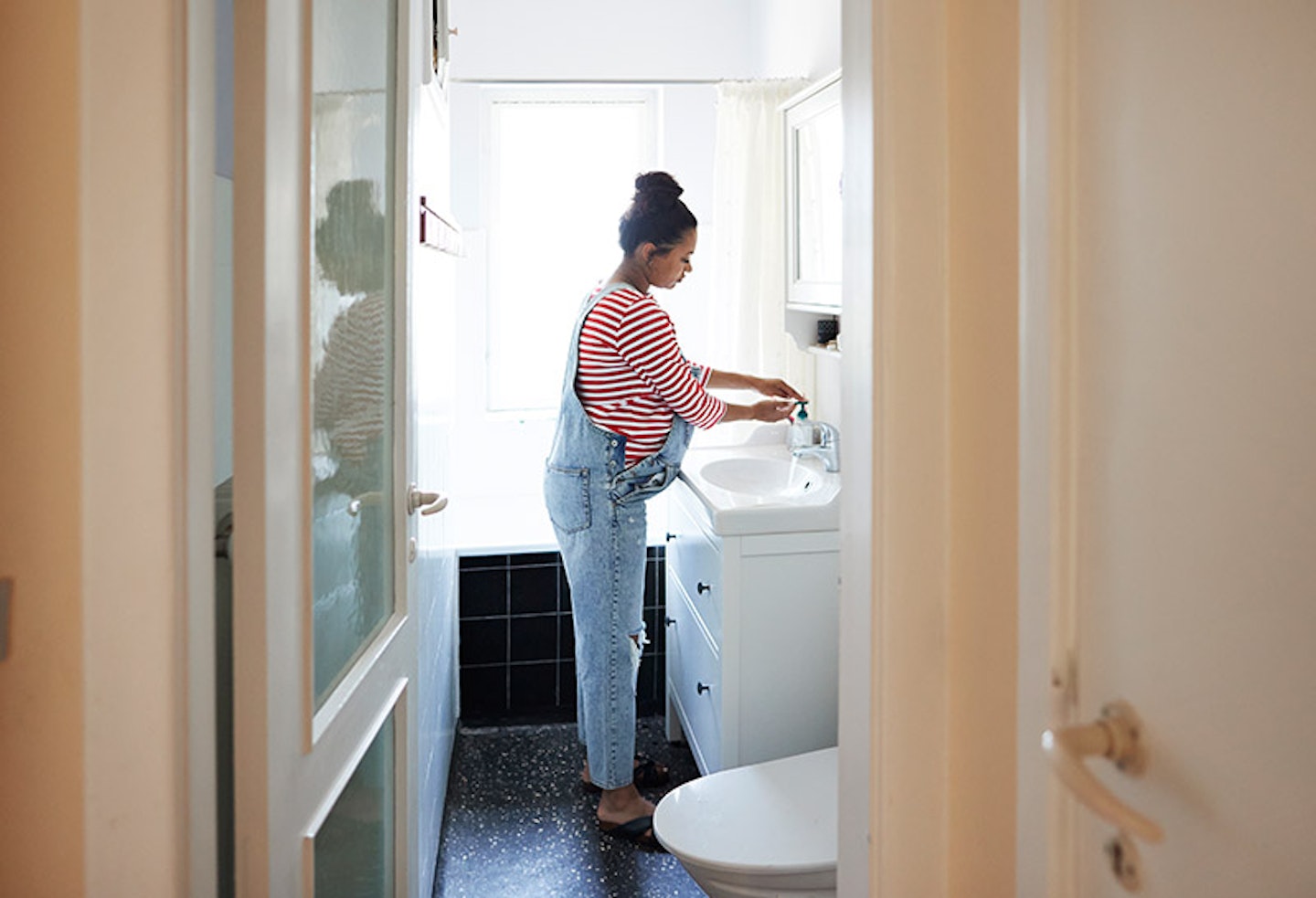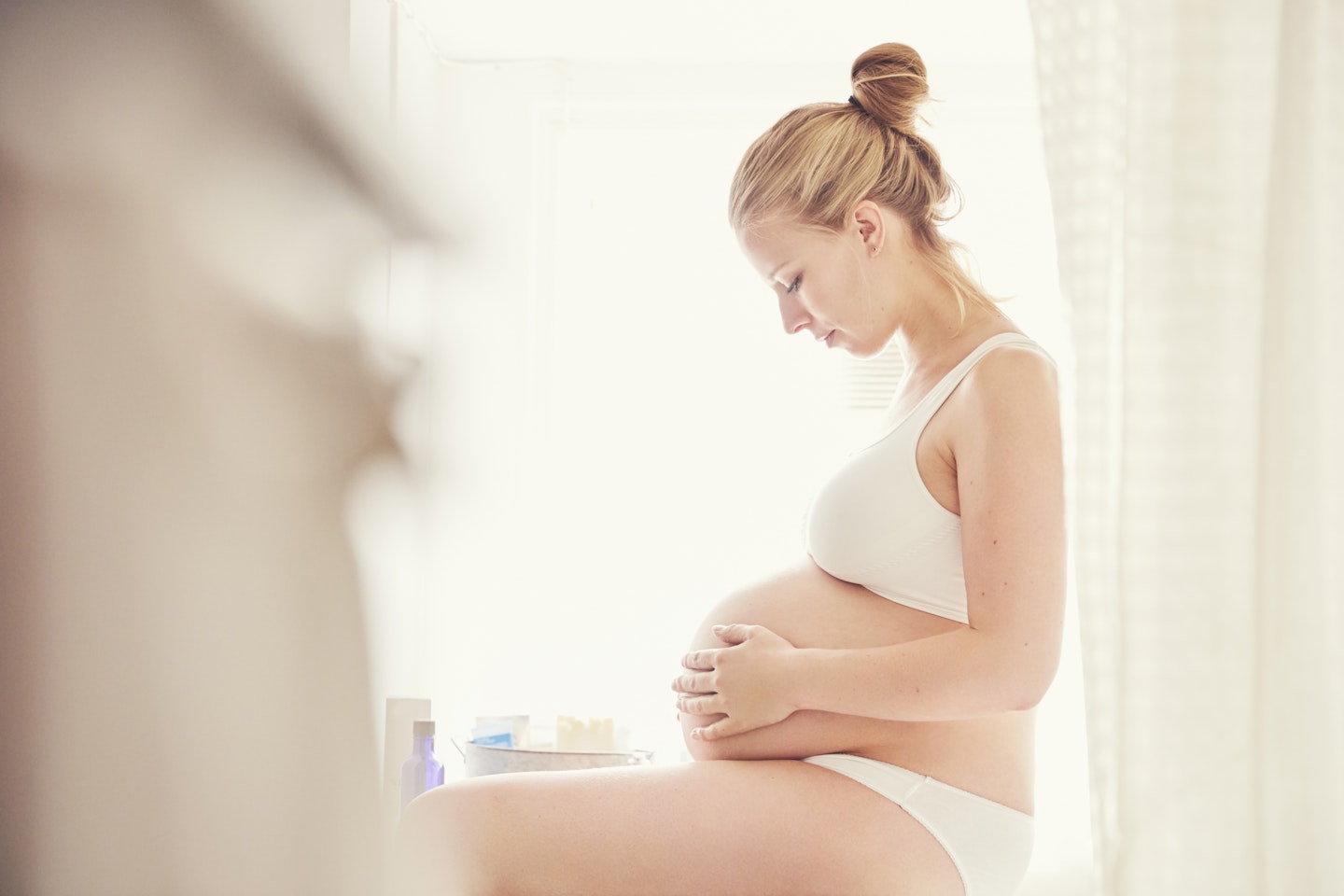Since getting pregnant, you’ve probably learnt enough new phrases to fill a whole book!
And just as you might have learnt the wordsBraxton Hicks, Linea Nigra, and Ventouse during the weird and wonderful journey that is pregnancy, once you get closer to the finish line, you’ll be wondering what it means when you hear the words 'your baby’s head is engaged'. In short, this means that your baby's head has moved right down into the pelvis and is in the correct position for birth.
Here's everything you need to know about your baby's head being engaged...
What happens when my baby's head is engaged?

When your midwife talks about your baby's head engaging, it means how far down your baby's head has moved into your pelvis. In first pregnancies, engagement can happen anywhere between 34 and 38 weeks. When this happens you may notice your bump move down a little.
The ideal position for birth is with your baby head down and looking towards your spine. This is called 'occiput anterior'. This position offers the easiest delivery as your baby can easily tuck their chin in as you push. However, as you near birth, your baby might be in a less desirable position such as breech position (lying bottom or feet first) or back to back (head down but facing your stomach, with their spine parallel to yours).
If your baby is breech or back to back there's nothing wrong with that - they will be perfectly happy in there! In many cases, the baby can be turned naturally with these simple steps from the NCT but your midwife may also be able to suggest some advice more tailored to you.
“When your baby's head is engaging, you might be told that baby is ‘at the brim’, which means that the baby's brow is just into your pelvis and the head can't wiggle and look around quite so much anymore,” says Rachel Fitz-Desorgher, a retired midwife with over 35 years’ experience in infant feeding, active births and working with parents.
If the widest part of the baby’s head can get into the pelvis, there is a better chance that your new arrival will come out the other side at birth without too much difficulty.
What does my midwife mean by 1/5th, 2/5th or 3/5ths engaged?
"When midwives and GPs feel your bump to see if baby is engaging, they think of the head being in 5ths, and then describe how many 5ths of the baby’s head have gone down into the pelvis. The very widest part of the baby’s head is at the 3/5ths point down from the top of the head.
“Week by week, you might learn that the head is 1/5th, 2/5ths, 3/5ths - and so on - into your pelvis as the head goes in deeper and deeper. Ask your midwife or GP if they are telling you how many fifths are already in your pelvis or how many can still be felt out - 3/5ths out is, of course, 2/5ths in! When 3/5ths are down into your pelvis, then the widest part of the head has got in and the baby is said to be engaged.”
But why is this measured? The answer is that if the widest part of the baby’s head can get into the pelvis, there is a better chance that your new arrival will come out the other side at birth without too much difficulty.
How can I tell my baby's head is engaged?
The symptoms for each mother and baby vary, with some mums not getting any symptoms at all when their baby goes into their pelvis.
However, Fitz-Desorgher says, some mums could notice several different symptoms:
Symptoms of baby’s head engaged
 1 of 6
1 of 61) Having a bit more space under their ribs
On the flip side, there is less space in the pelvis!
 2 of 6
2 of 62) A need to urinate more often
There is also an increased risk of a wee infection so get checked to be sure!
 3 of 6
3 of 63) Aching and stiffness in their back and front bone and sometimes all around their pelvis
 4 of 6
4 of 64) Changes in bowel habits
 5 of 6
5 of 65) More Braxton Hicks contractions
Particularly in the evenings when hormone levels are naturally higher.
 6 of 6
6 of 66) Lightening crotch
The nerves at the top of the thighs and vagina can get a little irritated and, when the baby moves, mums feel a short sensation like a tiny electric shock.
“Always tell your midwife or GP what you are experiencing so that you can be properly checked to make sure that all is well and that your symptoms are simply the baby going downwards,” she adds.
When will my baby's head engage?
The time when a baby’s head engages varies from mother to mother, according to Fitz-Desorgher.
There are several different factors that can affect the speed at which the head will drop in and engage, from the size and shape of your pelvis to whether you’re having your first baby or not. The way your baby is facing can also have an impact.
“With a first baby, the head generally starts to move down into the pelvis from about 36 weeks but some babies get moving downwards well before that,” she says. “Then, week by week, until you go into labour, the head moves down until it is engaged. Sometimes the engagement process is quick and sometimes it is slow. With a second or third (or umpteenth) baby, it is not uncommon for the baby to stay out of the pelvis, or just a little way in, until you get into labour. Then the baby goes into, through and out of the pelvis in one fell swoop in labour!”
Once engagement has happened, how long will it be until I go into labour?
There’s no one-size-fits-all answer to the questions of how long it takes to go into labour once your baby has engaged.
Women vary enormously in their experience of labour, and the time it takes for engagement to happen can be extremely different, even with the same woman with different babies.
“People will tell you that once the head is engaged, you will go into labour soon,” says Fitz-Desorgher. “This is not true, nor is it true that you won't go into labour if the head hasn't engaged. However, with a first baby, the head going down (even if it doesn't fully engage) is a good sign that your pelvis is a good size for birth.
“Don't panic, though, if this is your first baby and the head hasn't gone down by term - it might simply be that baby needs to wiggle into a better position as labour gets going and then will get down into and through your pelvis quite nicely. Your midwife or GP is the best person to advise you, not your mates on Facebook!”
Can I encourage my baby to engage quicker?
There are all sorts of advice for women about how to encourage their babies to engage, but according to Fitz-Desorgher, it’s debatable whether these recommendations actually work.
-
“Many people will tell you to lie on your left-hand side in bed"
-
"And to be careful not to sit too far back in your sofa"
She continues, "but good evidence for this is a little thin on the ground and many women start to fret and feel guilty when they do ‘all the right things’ and the baby hasn't dropped."
“Your body is beautifully evolved for growing and birthing your baby, so relax, stay as comfortable as you can in bed at night and when sitting at work or at home, and your baby will go into and through your pelvis all in good time. Remember that your midwife and GP are experts in understanding your pregnant body and how a baby grows and moves down. So write down all your worries and questions day by day and share them at every visit.”
Meet the expert: Rachel Fitz-D is a retired specialist midwife and works as a baby and parenting consultant. She has four grown-up sons and two grandchildren. She regularly presents at The Baby Show and is the author of “Your Baby Skin To Skin”.
